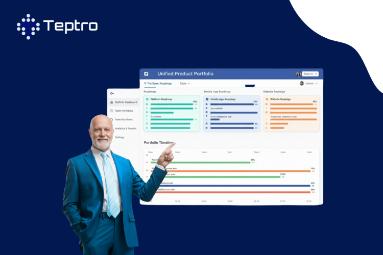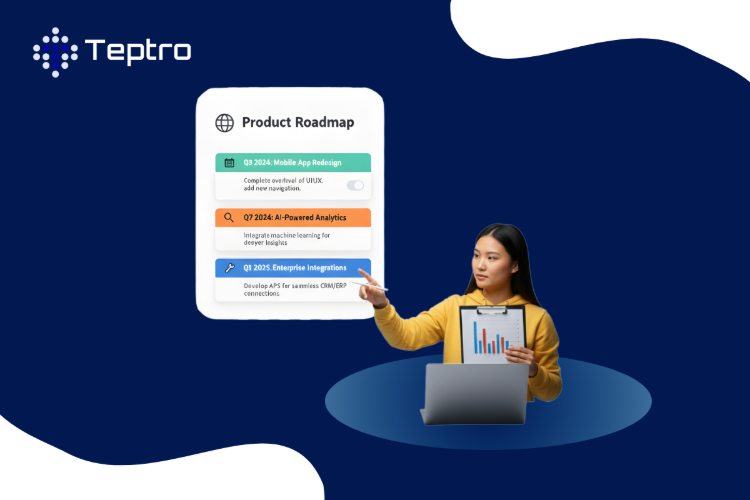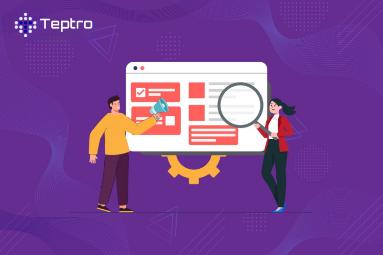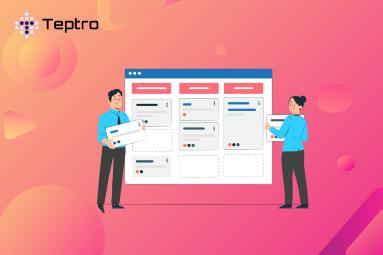A Detailed Guide to Improve Customer Experience via User Feedback Software
Are you a Saas Company? Or offer services through an app? Then, one of your primary concerns may include seeking user’s expectations, suggestions, and their evolving needs. We understand your struggles! To enhance customer experience with your offerings, listening, observing, and gathering data on what consumers say about your product is essential. One of the ideal methods to gather and track these insights is accessing centralized user feedback software. In addition, customer feedback is considered a pivotal element in tapping into the drawbacks of your product, understanding customers’ needs, complaints, or suggestions , and enhancing further improvements seamlessly. This makes customers feel valued, and for organizations , you can better understand what’s working and where you are missing out. Collecting feedback through a customer feedback system , identifying common patterns, and implementing a roadmap can help you significantly boost conversion rates, sales, and customer retention. Your customers will tell you where exactly there are finding problems, and in some cases they might help you to improve certain factors. Isn’t that great? However, like any other procedure, enhancing user experience with customer feedback management tools , is needed through planning. Don’t worry; this blog will cover varied aspects of collecting and analyzing feedback to boost customer satisfaction. How to Enhance Customer Experience with User Feedback Software? Remember, your strategy for user experience should meet customers’ expectations and needs. That’s why every business strategy, whether for marketing campaigns, improving products, customer service, the after-launch process, and more, includes a high volume of insightful data. However, to maximize customer satisfaction and profit, your offerings must change based on customers’ evolving needs and expectations. How? Leveraging an impactful solution like Teptro’s customer feedback analysis platform to get an overview of vital feedback data. 1. Respond to Feedbacks Quickly When a consumer posts feedback either on your centralized customer feedback system or any other platform, make sure to address their feedback with prompt responses to make them feel that you are focused on improving their experience. Plus , following this method can increase the rates of customer satisfaction and retention. According to research, 56% of customers eventually changed their perspective about a brand by receiving timely, continuous, prompt responses. In addition, timely responses to feedback aid in identifying consumers’ expectations and certain issues at the right time. Gathering valuable data will help you meet evolving customer’s expectations, solve certain issues , and build trust for the long term , and prompt responses boost the rate of customer engagement. You can consider responding to every feedback received on user feedback software. Whether it is positive feedback, suggestions, or complaints, ensure you reply to each input. Now, you may receive feedback irrelevant to your current software development cycle or impossible to wor k . Even then, respond to the user by specifying the reason and making them feel valued, as their feedback can be useful in the future. Customize Customer’s Experience As we mentioned above, timely responses make customers feel valued and increase customer satisfaction. However, when these users experience a personalized experience with the app or software, they are more likely to be loyal to your brand. By gathering essential insights through a customer feedback management tool, you can identify specific patterns of consumer preferences, demand for new features, bugs in existing features, recognize if there is room for a change in software/ app layout and more . Leveraging these factors, businesses can offer better-personalized products, offer rewards to customers, and personalize communication during the process or after the launch. Accessing customer feedback analysis platforms isn’t only about collecting varied data but also about analyzing very minute details to pinpoint any bugs that your team might miss. For instance, you can identify areas disturbing the quality of your product or inefficiency in app performance—all through customer feedback. These insights can help create an optimized roadmap , implement innovations to improve products or services, reflect your solutions to address customers’ needs, create a personalized communication strategy, and elevate the customer experience with your brand. Fulfil Customer’s Expectations Whether you are collecting feedback or have begun implementing accurate actions, fulfilling consumers’ expectations should be your priority. For instance, amid the feedback loop, customers expect brands to respond to their queries, complaints, and suggestions promptly . Even if you launch impactful innovations and address their concerns with compelling features, you may observe reduced engagement or customer interest in your product. Why? Due to a lack of responsiveness, relevance to your customer’s needs, and lack of communication methods. To solve this issue, consider integrating your system with a user feedback software management to consistently improve your product, engage with customers regularly, and identify recurring issues that might be missed. Ignoring all these factors can lead to increasing customer dissatisfaction in the long run. Hence, constant research is conducted, feedback is collected, and customer experience is improved by meeting customers’ expectations. Build a Streamlined Feedback Loop A feedback loop is a process where the received feedback collected from varied platforms is categorized and taken forward to create innovation with existing products, resolve issues, or introduce new features. However, it’s an ongoing process dedicated to improving customer satisfaction, increasing the business, maintaining brand identity, and improving product quality with user feedback software. By continuously gathering feedback through a user feedback software tool, you will gain the advantage of staying relevant with customers, adapting the culture for continuous improvements, addressing potential issues at the right time, and fostering business growth. Utilize Feedback Data to Improve Customer Experience Collecting feedback from different sources will be impactful for your organization when you have an effective system or strategy to identify potential demand, profit, or opportunity to enhance customer experience. Sounds confusing? You must plan to identify impactful patterns from high-volume feedback data, categorize the data, and consider taking appropriate action based on these insights. While this method may feel overwhelming when you do not have a streamlined process to solve your concern, Teptro’s customer feedback system provides an overview of selecting themes and categories and utilizing custom reports to develop a roadmap and changelog under one platform. However, ensure that you listen to every consumer’s voice and update them with which request will be implemented by the time your product team focuses on crafting innovation. This approach will demonstrate to customers that you are a customer-centric company and strive to implement continuous improvements to resolve their concerns with user feedback software . Elevate your Customer Services While collecting feedback through user feedback software is vital to improving users’ experience with your brand, you cannot afford to lose your customers with inefficient customer service. Before sharing feedback, your customers are more likely to connect with customer service when they face any inconvenience or issue with the product. Ensure your customer service team is prompt and has accurate answers for better results. Furthermore, you can integrate with the team members of customer service , extract information from support interactions, identify common complaints and positive feedback, and more. In addition , based on average customer feedback, you can identify gaps in your customer support services and train the team to maintain effective communication. Consider revising the customer support team’s process or workflow to enhance responsiveness, eliminate loopholes, and boost customer satisfaction by leveraging the user feedback software. Track Customer Experience Regularly with user feedback software To ensure the relevance of your product in customers’ lives, it is important to track the effectiveness of your offerings on customer experience with user feedback software. Consider conducting timely surveys, personalized interviews, or calls with specific customers from the community to determine if you are aligned with evolving demands, market trends, and customers’ expectations. Identify potential trends and issues with the product, and based on the insights, make adequate adjustments to stay ahead of the curve and improve the customer experience from time to time . However, it is important to respect customers’ time and value their opinions. Your tone of communication shows willingness for open discussion and acceptance of all types of user feedback software. In addition, regularly updating customers on how you utilize feedback can encourage more customers to participate in this process, build trust, and increase engagement effortlessly by user feedback software . Take the Right Actions with Teptro By taking the right approach to continuous improvement, businesses can easily fill the gap between reduced sales, recurring complaints, and dropped revenue. Collect feedback via user feedback software, identify trends, connect with your customers, analyze different aspects to create solutions that bring convenience to your customers’ lives, and acquire more happy consumers. If you want to explore more about the user feedback software tool or its pricing plan, get in touch with us today !

















